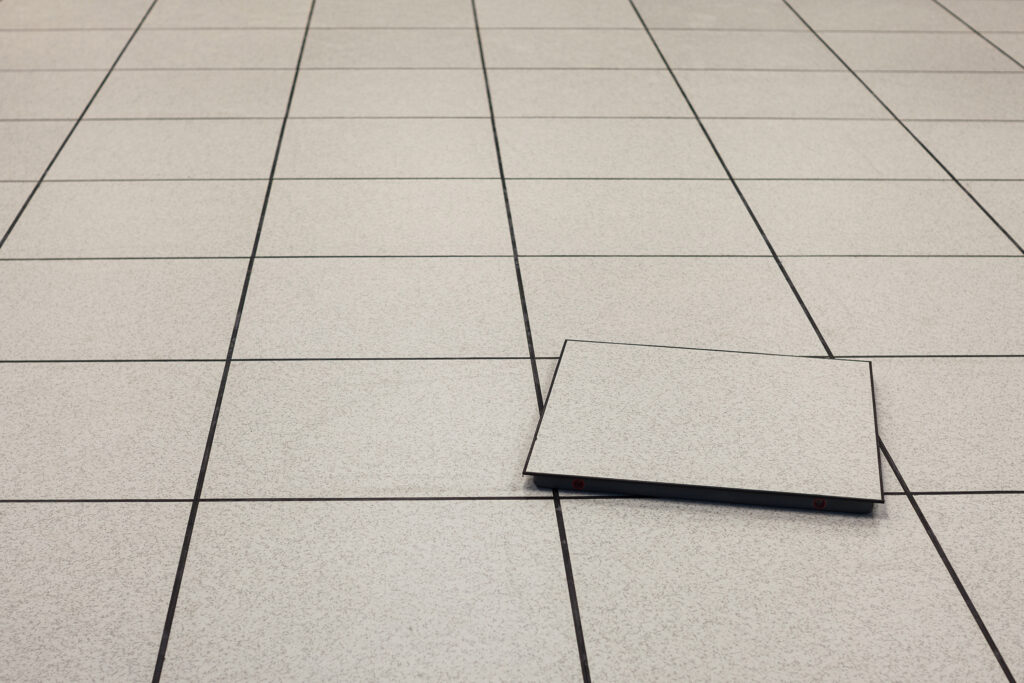An indoor floating floor involves an installation system of porcelain stoneware tiles on top of a modular frame structure, in order to raise the walk-on surface compared to the floor base. This allows for the creation of a technical chamber where the wiring and piping needed to configure a room can be housed, from electric wires to hydraulic and air-conditioning systems, computer networks and more. This unusual feature makes the indoor floating floor a high-performance solution and less invasive compared to traditional laying techniques.
Floating floors for indoors and outdoors
Porcelain stoneware floating floors are widely admired and used for outdoor areas in private homes, thanks to their unique durability and resistance to atmospheric agents. That said, nowadays, this technique is also widely used for indoor floating floors and is especially common in offices and commercial contexts because they are easy to lay and offer considerable aesthetic quality.
Indoor floating floors also help with the creation of the wiring and piping systems, because they are designed so that all the electrical wires, piping and computer systems can be placed under the walk-on surface. This avoids building work and guarantees fast access to the whole system: just lift the individual tiles to inspect the area in question. This is why offices and shops prefer the floating solutions for their indoor flooring.

Laying floating floors indoors.
The ease with which floating floors are laid indoors is undoubtedly the first of the many advantages of this choice, capable of dramatically cutting completion times. Firstly, laying an indoor floating floor does not involve the removal or adaptation of the pre-existing surfaces and means the original flooring can be preserved intact.
Laying starts with the lattice tracing stage that defines the position of the support columns and the wiring and piping. Next, the frame structure is assembled as well as the crossbeams and dust and vibration prevention seals. The porcelain stoneware panels are then placed on the structure and the walk-on surface can be used instantly.
The pros and cons of indoor floating floors
Like every kind of installation, even indoor floating floors have advantages and limitations that it is wise to be aware of at the decision stage.
As well as its ease of laying which, as we have seen, is a genuine added value to the indoor floating floors, the other main benefits of this solution include:
- Fast installation and economic saving in terms of materials and manpower;
- There is no need for building work and the original floor is preserved;
- Wiring and piping can be inspected from under any tile at any time;
- Ecological solution that requires no chemical glues for laying;
- Maximum design flexibility, even at the implementation stage;
- Maximum versatility when there is a change of use;
- Maximum customisation thanks to a wide variety of sizes and finishes, ideal for every kind of environment and style;
- Quality and aesthetics combined with a contained state-of-the-art technique;
- Simple removal, replacement and reconfiguration;
- Sound absorption and sound insulation between the environments separated by the floor;
- Also suited to solutions with underfloor heating;
- Elasticity in response to changing levels of humidity.
The floating solution is a high-performance answer not just for outdoor flooring but also for indoor floating floors.
On the other hand, the choice of indoor floating floors is unsuitable when the laying plans are particularly complex and require an even resting surface in good condition, as this prevents unwanted movement or a yielding of the panels over the years.



